Performers
In Japanese alphabetical order
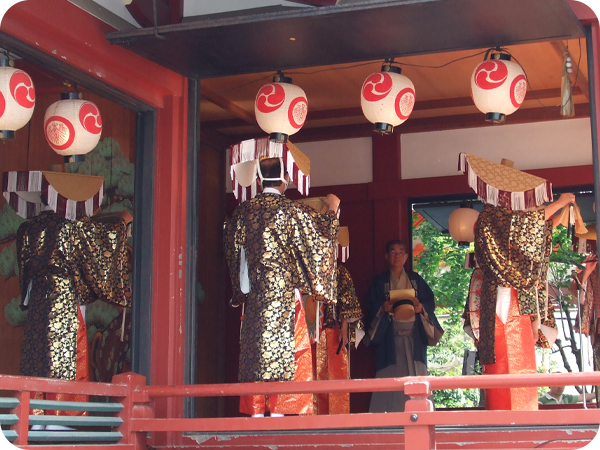
Asakusa Shrine’s Binzasara
Asakusa Shrine’s Binzasara Kai
This Dengaku dance is performed on the first day of the Asakusa Shrine Festival, known as the Sanja Matsuri, to pray for a bountiful harvest. It is said that when the Kannon (the Goddess of Mercy and Compassion) of Asakusa appeared from the Miyato River (now the Sumida River), Ten kusakari doji children of mowing peasant built a thatched hut to enshrine Kannon and danced to celebrate the completion of the hut, which is said to be the origin of the Binzasara dance.
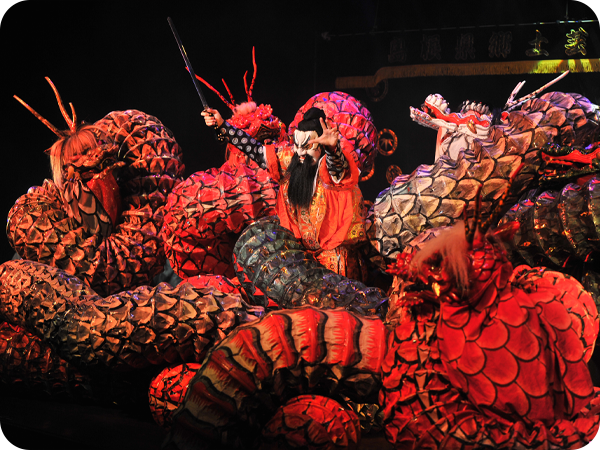
Iwamikagura
Iwamikagura Tokyo Project
Iwamikagura dance is a traditional performing art representative of the Iwami region in western Shimane Prefecture. The dazzling costumes, lively musical accompaniment, and dynamic dances transport viewers to the world of ancient mythology. Centered on people with experience in Iwamikagura dance (those originally from the region) living in the Tokyo metropolitan area, this project promotes the charms of the traditional culture that lives on in Iwami through a variety of activities.
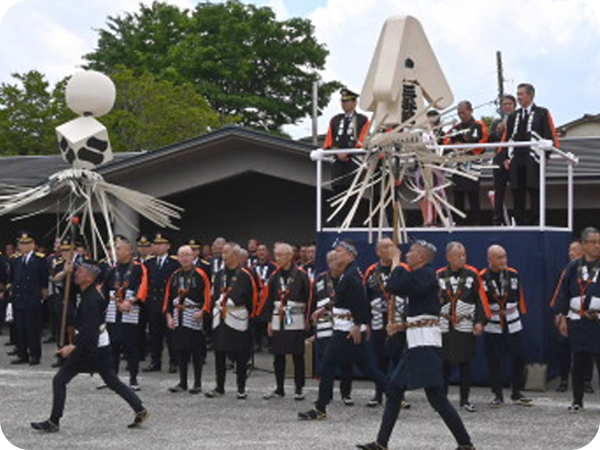
Kiyari, Matoiburi, Hashigonori
Edo Shobo Kinenkai (Edo Fire Brigade Memorial Association)
The traditional work song “Edo no Tobikiyari,” created by Edo town firefighters over 300 years ago and the acrobatic performance “Edohikesi no Hasigonori” have both been designated Intangible Folk Cultural Properties by the Tokyo Metropolitan Government. The Edo Shobo Kinenkai is dedicated to the continuous preservation and sharing of these historical and cultural traditions.
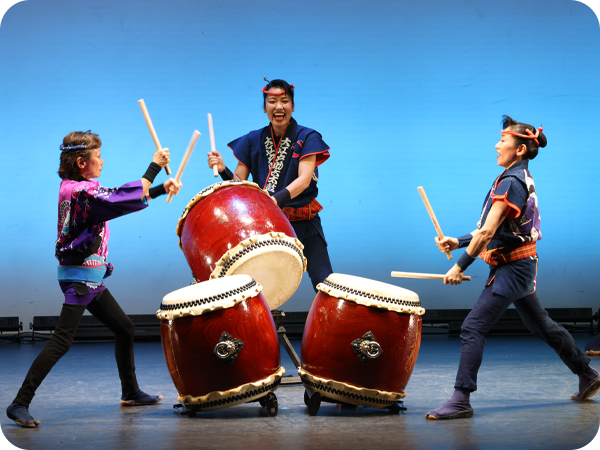
Traditional Japanese Drum
Oedo Sukeroku Taiko
Oedo Sukeroku-ryū Tokyo deaf Taiko Club KOYUH-KAI
Oedo Sukeroku Taiko is one of Tokyo’s leading taiko traditional Japanese drumming groups, which has established its own style of playing based on the bon taiko drums of the historic downtown area and traditional Japanese musical accompaniment, using a unique technique called the “Sukeroku Naname Slanted Drumming Style” which allows the drummers to strike the drums dynamically. The disciple KOYUH-KAI drumming group refines its performance skills together with those who are not hard of hearing, and actively performs and engages in exchange activities throughout Japan as a group affiliated with the Oedo Sukeroku-ryū.
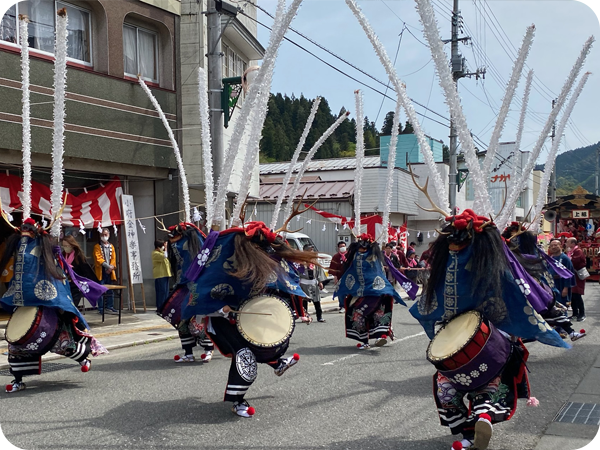
Kakinaizawa Shishi Odori
Gyozanryu Yamaguchiha Kakinaizawa Shishiodori,
Kakinaizawa Shishiodori Tokyo Branch
Kakinaizawa Shishi Odori dance is a traditional dance performed by dancers wearing shishigashira deer heads and carrying sacred sasara poles on their backs. It has been passed down in Sumita, Iwate Prefecture, for about 230 years and is performed to honor the spirits of ancestors, and others. The Tokyo Branch was established in 2022 by volunteers who participated in the International Dance Dialogue Project. In addition to practice sessions and workshops in Tokyo, the branch collaborates with local preservation societies to organize residency programs and performances.

Matsuri Mikoshi Togyo
Kanda Matsuri,
Edo Sou Tinnju Kanda Myojin Shrine
The Kanda Matsuri is held in May at Edo Sou Tinnju Kanda Myojin Shrine and is known as the Tenka Matsuri which used to be attended by the Tokugawa shoguns.
The biggest highlight of the Kanda Matsuri is the Mikoshi Miyairi, which takes place once every two years, when more than 200 Mikoshi portable shrines of various sizes from 108 town associations of Ujiko parishioners parade through the districts on their way to Kanda Myojin Shrine to offer prayers. This time, the Edo Sou Tinnju Kanda Myojin Shrine Mikoshi will take part in the procession in Tokyo Wasshoi.
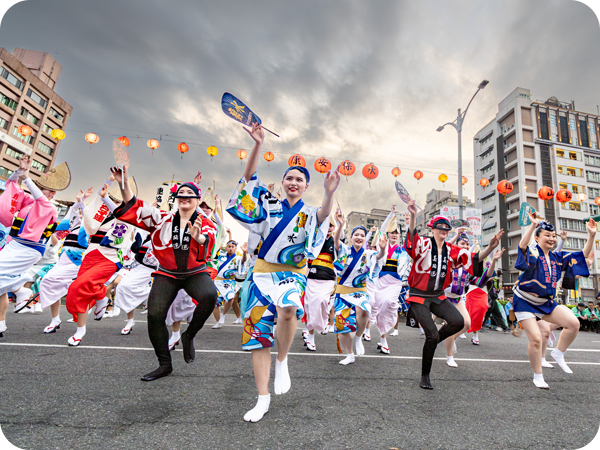
Awa Odori
Joint Team from Koenji Awa Odori Association
The Tokyo Koenji Awa Odori, which began in 1957, has grown into a summer tradition in Tokyo, attracting approximately 10,000 dancers and 1 million spectators. Koenji is home to the Joint Team from Koenji Awa Odori Association, which consists of 31 groups dedicated to authentic Awa Odori dance. Each group preserves its unique character while also uniting their spirits as one to perform a joint dance that brings together the sounds and movements of all the groups.
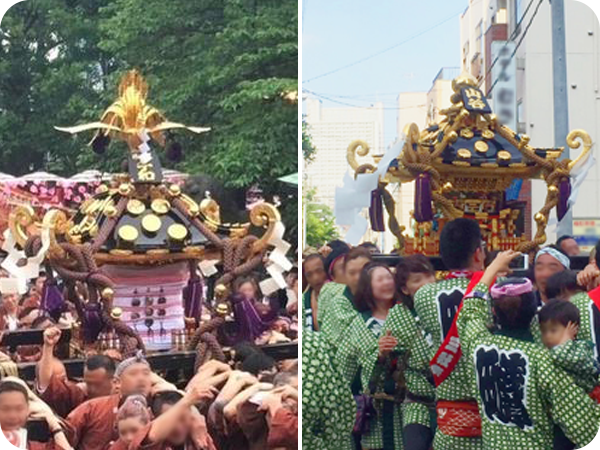
Matsuri Mikoshi Togyo
Sanja Matsuri
Asakusa Senwa Chokai,
Asakusa Machiichi Chokai
The Sanja Matsuri is an annual festival held in May at Asakusa Shrine, named after the three deities enshrined there. Nearly one hundred Mikoshi portable shrines, including three grand shrine Mikoshi and community Mikoshi, fill the streets in a breathtaking spectacle. In addition, the Shinji Binzasara dance and other performances are also dedicated to the deities of the shrine. From the 44 town associations, Tokyo Wasshoi will feature a procession of the Asakusa Senwa Chokai and the Asakusa Machiichi Chokai Mikoshi portable shrines.
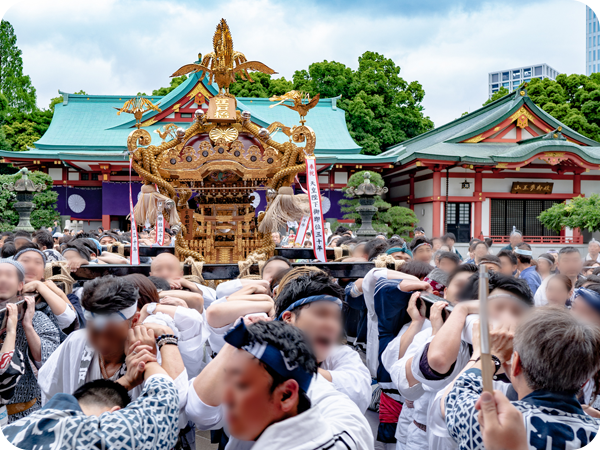
Matsuri Mikoshi Togyo
Sanno Matsuri, Edobashi-Kai
(Nihonbashi 1-chome Higashi Chokai, Nihonbashi 2-chome Chokai and Nihonbashi 3-chome Higashi Chokai)
The Sanno Festival at Hie Shrine is called Tenka Matsuri or Goyo Matsuri because it used to be attended by the Tokugawa shoguns. Currently held every other year, the festival features a 300-meter procession of 500 people centering on the Horen imperial carriages, which has a golden phoenix on its roof, and Hie Shrine-owned Miya Mikoshi portable shrine that parade through the city center. This time, the Edobashi-Kai Mikoshi portable shrine will take part in Tokyo Wasshoi.
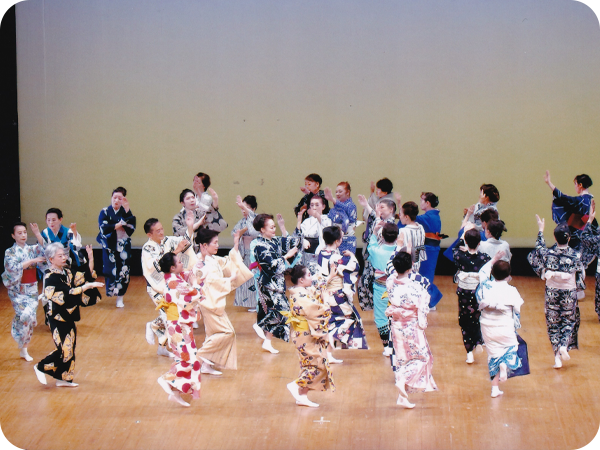
Bon Dance
The Japanese Folk Dance Federation of Tokyo
The federation was established on the occasion of the Asian Games held in Tokyo (1958), and performed Tokyo Gorin Ondo at the Olympic Eve Festival (1964). For the past 67 years, we have been working to develop and pass on irreplaceable folk dance through training instructors and successors. Bon Odori is the "root of folk dance" and the origin of the Japanese spirit of welcoming and offering prayers for the spirits of ancestors.
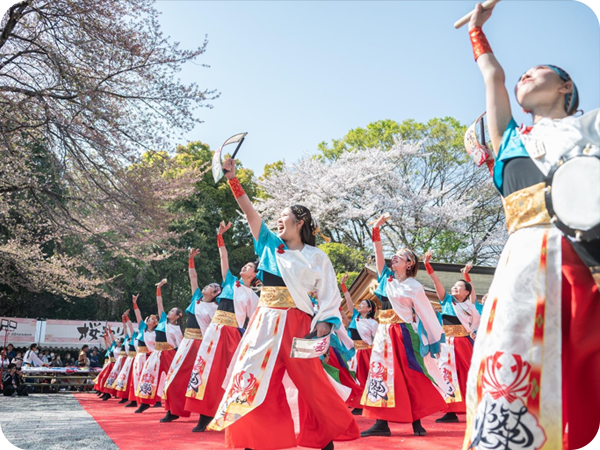
Yosakoi Narukoodori
Tokyo Yosakoi Team Sun
Founded in 2013, Tokyo Yosakoi Team Sun is one of Tokyo’s leading teams, boasting achievements such as two consecutive victories in the Tokyo Yosakoi Contest. They perform the Yosakoi Narukoodori, which originated in Kochi in 1954. Holding wooden percussion instruments called naruko, the dancers move dynamically with powerful steps, wearing distinctive costumes. The combination of the naruko instruments and music is a big part of their appeal.
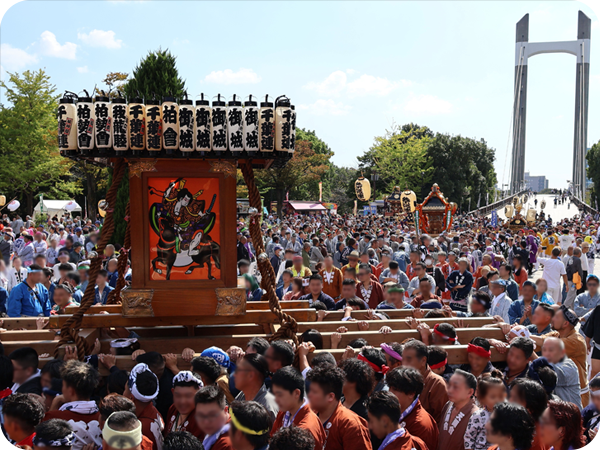
Matsuri Mikoshi Togyo
Japan Mikoshi Association
The Japan Mikoshi Association was established in 1982 with the aim of preserving and popularizing traditional Japanese culture, contributing to the development of local communities and their cultures, promoting the healthy growth of youth, and ultimately contributing to world peace and international cultural exchange. Every year, the association hosts the Oedo Mikoshi Matsuri.

Hizato Shishimai
Hizato Shishimai Hozonkai
The Hizato Shishimai lion dance is said to have been introduced to Hinohara in 1657. It is a type of three shishi lion dance performed at the autumn festivals of Yasaka Shrine and Kifune Shrine to pray for a bountiful harvest and safety for the family. In addition to shishi lions, there are tengu supernatural spirits and hanagasa performers carrying musical instruments called sasara. The flowers on the hanagasa headwear are handmade in the traditional manner.
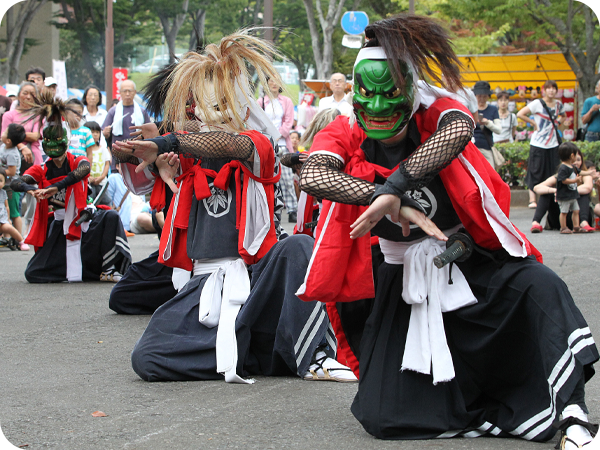
Onikenbai
Futagoryu Tokyo Onikenbai
The Onikenbai demon sword dance of Kitakami, Iwate Prefecture, is a type of Nenbutsu Odori Buddhist prayer dance in which dancers wear oni demon masks (incarnation of Buddha) and stomp the ground vigorously in a display of strength and courage to honor the spirits of the dead. The Futagoryu Tokyo Onikenbai is the first official Onikenbai demon sword dance group outside of Iwate Prefecture, and its members include dancers of all ages and genders who perform accompanied by traditional music.
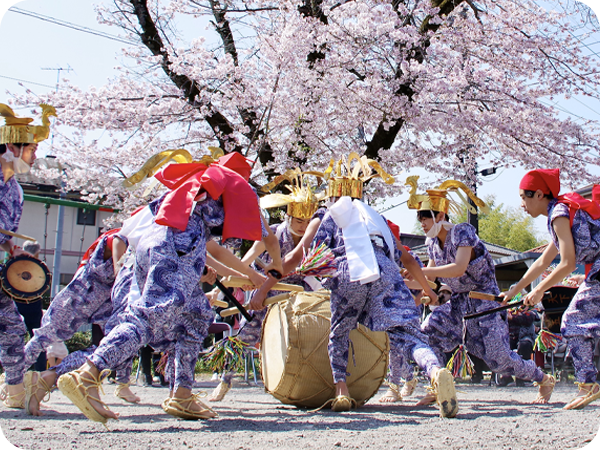
Ho-oh no mai in Shimohirai
The Association for the Preservation of Ho-oh no mai
This folk performing art, passed down by the people of the Shimohirai district of Hinode, Tokyo for generations, is said to have been performed as a dance to ward off epidemics and pray for rain. The ho-oh phoenix crown worn by the dancers is a rare sight even in Japan. In 2022, it was registered as one of the UNESCO Intangible Cultural Heritage Furyu Odori ritual dance.
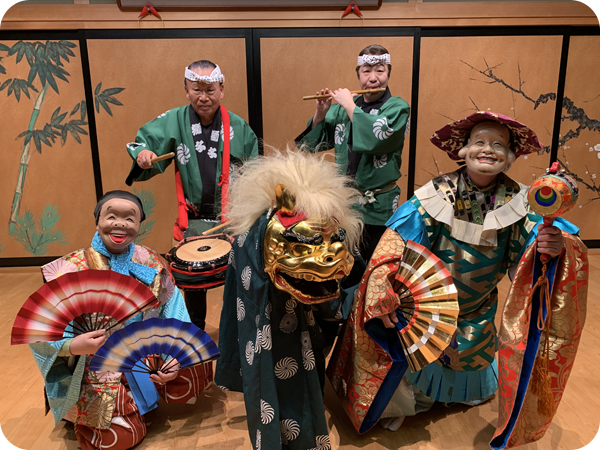
Edo no Satokagura
Matsumoto Gennosuke Shachu
Edo no Satokagura is a silent play based on stories from the Kojiki (The Records of Ancient Matters) and other mythological sources, as well as the origins of Shinto shrines. This folk performing art has been enjoyed by the general public since the Edo period. Led by the fifth generation Matsumoto Gennosuke, the Matsumoto Shachu performs not only in Japan but also in the United States, Europe, and other parts of the world, striving to develop and preserve the Edo no Satokagura.

Mizudome-no-Mai
Mizudome-no-Mai Hozon Kyoryokukai
Mizudome-no-Mai is a traditional event held every July at Gonsho-ji Temple in Omori of Ota City in Tokyo. It began in 1323 in hopes of calming the long rains and flooding that struck the Kanto region, and originated as prayers to stop the rain by performing a ritual involving Ryujin Dragon Gods and a ritual involving Shishimai lion dances. It is a traditional performing art that has been rooted in the local community for over 700 years.
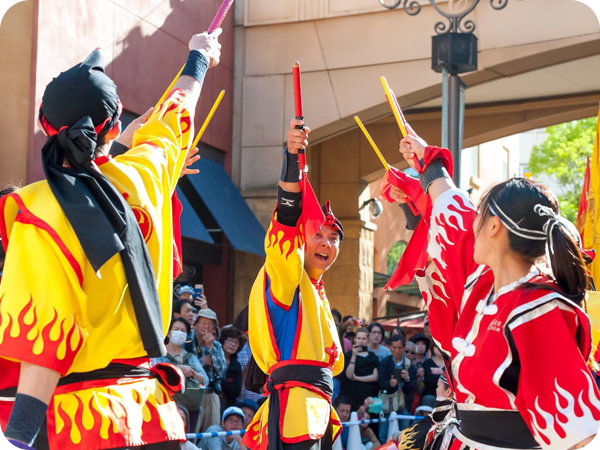
Creative Eisa
Ryukyu Budan Shoryu Matsuri Daiko
Eisa is a traditional Okinawan performing art performed during the Obon festival to comfort the spirits of ancestors. Ryukyu Budan Shoryu Matsuri Daiko preserves the foundations of this tradition while incorporating Okinawan karate and Ryukyu dance into highly creative choreography. They strive to perform flawless dances that captivate audiences, touring nationwide throughout the year to share the charm of Ryukyu performing arts with the world.
*Performers and content are subject to change or cancellation due to unforeseen circumstances.
